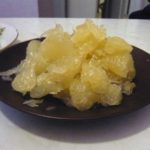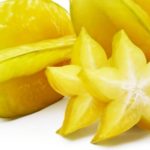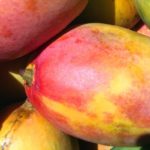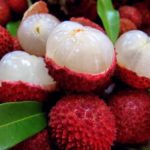Fruit Sweetie or Oroblanco
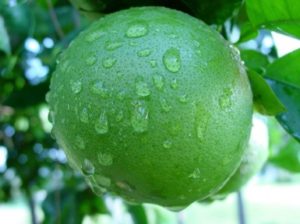 Long gone are the days when people in turn bought apples and pears in vegetable stalls, and before the New Year they rejoiced at tangerines. For quite a few years, supermarket shelves are littered with all kinds of exotic fruits. Residents of large cities can not be surprised with bananas, pineapples, kiwi and mango and so on. But many are still mistrustful of one of these overseas delicacies. But this fruit is not deservedly neglected.
Long gone are the days when people in turn bought apples and pears in vegetable stalls, and before the New Year they rejoiced at tangerines. For quite a few years, supermarket shelves are littered with all kinds of exotic fruits. Residents of large cities can not be surprised with bananas, pineapples, kiwi and mango and so on. But many are still mistrustful of one of these overseas delicacies. But this fruit is not deservedly neglected.
Most buyers perceive it as not ripened grapefruit and therefore often pass by. Not only that, it is called differently by different sellers, somewhere on the price tag it means “suite”, somewhere “oroblanco”, and in some places it’s “marked”, it simply confuses people. Although in principle the sellers are absolutely right, this not quite ordinary fruit has really three names.
In addition, this fruit is not quite a common history of origin. Indeed, such a fruit did not exist in nature; it was bred artificially in America, at the research center of the University of California, by crossing a sweet Siamese pomelo and a white marsh grapefruit.
In 1984, Israeli breeders took the American fruit as a basis and brought out an even more successful version, which was called Sweetie, which means “sweet” in English. This variety has gained distribution in many countries where citrus fruits grow. Now, the suite can be seen not only in America and Israel, but also in Italy, Spain, India, China, Japan, and the countries of South America.
How does the suite grow?
As well as grapefruit – these are spreading forever green trees usually up to 4 meters high, although sometimes more than 10 meters are also found. But on plantations where the formations are massively grown, the height of the trees is usually much lower, on average up to 2.5 meters. Most likely this is done for the convenience of tree care and harvesting. The leaves of these trees are oblong, dark green. Young fruiting branches are greenish, perennial dark in color.
Sweetie blooms with white flowers no more than 5 cm in diameter with 4-5 petals and a protruding nimbus. In appearance, the flowers are unsightly, but have a surprisingly delicate aroma. Flowers can be arranged either one at a time or in clusters of up to a dozen pieces nearby. Here is a photo of this flower giving an amazing fruit.
The fruits themselves are somewhat lighter in color. Outwardly, it looks like a pomelo, but almost the size of a grapefruit, but it tastes much sweeter than oranges, tangerines and grapefruits. They are about 10 – 12 cm in diameter, have a shiny, smooth and thick peel. The fruits are quite dense and therefore even seemingly small in appearance, they seem significant. In most varieties, the fruit peel remains green even when fully ripened. The peel of the fruit is oily to the touch and if it is removed, a kind of layering remains on the hands.
Unlike other citrus fruits such as oranges, tangerines, the suite has a rather thick peel and a lot of film between the slices, so a lot of waste remains when consumed. Because of this, for a long time he was not popular even in his own country, let alone abroad, until people tasted it and learned its beneficial properties. And the useful properties of the suite, as it turned out, are much more than its ancestors grapefruit and pomelo. The pulp contains about 7% protein and 48% carbohydrates, fats are completely absent. 100 g of the product contains up to 45 mg of vitamin C, up to 10 mg of vitamin A and B6, a large amount of iron, magnesium, copper, silicon, sodium, calcium, fluorine, phosphorus and potassium, antioxidants, essential oils, folic acid, and most importantly special enzymes that help break down fat and protein.
Due to the high content of vitamin C, sweetie is one of the effective fruits that can be used in the treatment and prevention of colds. The presence of these same “special enzymes” makes it an excellent dietary product, the use of which not only does not contribute to weight gain, but, on the contrary, helps to get rid of the heat accumulated in the body from other products. Ordinary grapefruits possess some of these properties, but the bitterness of their flesh is not to everyone’s taste and more often discourages eating them often. In Sweetie, a little bitterness is present only in the films between the slices and if they are carefully removed before use, then it is quite possible to eat several fruits a day and then you can really get the result of a decrease in body weight. And when you consider that the energy value is not more than 55 kcal, it becomes clear why this fruit is useful for overweight people. Its use will help get rid of toxins, lower cholesterol. In addition, the work of the heart is normalized, this is a good reason for the suites to be used by people suffering from cardiovascular diseases.





